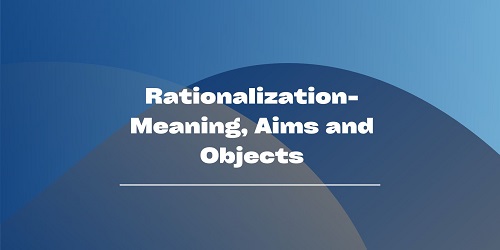The Social Welfare Function:
Another attempt to rehabilitate the economics of welfare has been made by modern economists like Bergson, Samuelson, and Tintner. This has taken the form of social welfare function. According to these economists, if welfare economics does not import value judgments from outside economics, it will fail to serve the purpose for which it is intended. In their view, welfare economics is essentially a normative study, dealing with things as they ought to be. And yet they believed that welfare economics could and should be studied scientifically by economists.
In their attempt to reconstruct the welfare theory, these economists have introduced into their analysis what is known as the social welfare function. This is a set of value judgments (including judgments about distribution) from outside economics with the help of which it becomes possible for the economists to say which, of the various alternative situations, is the socially most desirable. In simple words, the social welfare function is a device by which a social scale of preferences could be derived from individual scales of preferences. It may be attained by common consensus or it may be forced on society by some dictator. Whatever the case might be, the social welfare function is always represented by some ethical belief. It always yields a specific answer about whether one economic system is better than the other. At the same time, it takes into account all the possible determinants of individual welfare functions and how they are aggregated into one single social welfare function.
There are obviously two ways of constructing the social welfare function. One method is to take into account the preferences of one particular individual and build up the social scale of preferences on their basis. But this method would not yield a satisfactory social function unless the entire population of a country happens to be homogeneous in matters of tastes and aptitudes. This, as we know, is not the case. Or, it is possible that some dictator might force his own preferences on society and call them the social scale of preferences or the social function. But, as pointed out earlier, the dictatorial or paternalist approach is ruled out of welfare economics.
The other method for the construction of the social welfare function is the democratic voting system. All members of the community, according to this method, order the various alternatives according to their own preferences which are reduced later on to one single function by majority of votes.
The social welfare function is, thus, an important theoretical device that “completes the formal mathematical system of welfare economics.” But the idea has been criticized on the ground that it has little practical significance. The criticism mostly applies to the difficulty involved in the construction of the social welfare function. As pointed out by Prof. Arrow in his book entitled Social Choice and Individual Values, a consistent, rational, and non-contradictory social ordering (through voting) is hardly possible when the people are called upon to choose from among more than two alternatives. An example will illustrate this point. Let us suppose that there are three individuals A, B, and C, and three alternatives X, Y, Z. A prefers X to Y and Y to Z (and thus X to Z); B prefers Y to Z and Z to X (and thus Y to X); C prefers Z to X and X to Y (and thus Z to Y). The social ordering of each pair of alternatives through majority voting can be expressed in a tabular form:
| Alternatives Compared | Individuals | Individuals |
|---|---|---|
| For | Against | |
| X preferred to Y | A and C | B |
| Y preferred to Z | A and B | C |
| Z preferred to X | B and C | A |
It is obvious from the above table that a majority of individuals prefer X to Y and Y to Z, and hence we are in a position to say that society, taken as a whole, prefers X to Z. But the above table indicates that a majority of individuals also prefer Z to X. Thus, when there are more than two alternatives to choose from, the majority decision may lead to an inconsistent and contradictory social welfare function.
It may be argued that in those cases where such a contradiction does not arise, majority voting can help us to construct a social welfare function. To this, it can be replied that a social welfare function constructed through majority voting (or, decision) will not represent the welfare of the entire community. As such, the social welfare function will be meaningless. To be meaningful, a social welfare function should represent the welfare of the entire community. And this is not possible unless the community arrives at a unanimous group decision. As we know, a community seldom makes a unanimous decision. Hence, we are led to the conclusion that the concept of social welfare function is not workable and, as such, has little practical significance.









Comments (No)